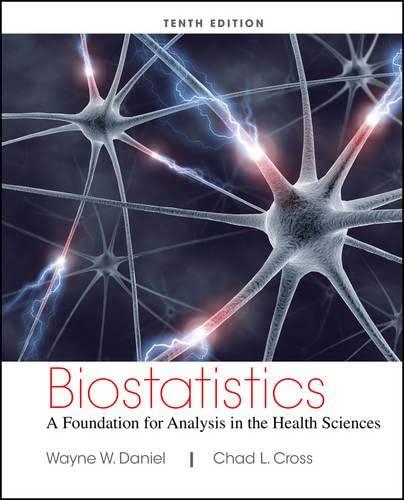Watanabe et al. (A-31) studied 52 healthy middle-aged male workers. The researchers used the Masstricht Vital Exhaustion
Question:
Watanabe et al. (A-31) studied 52 healthy middle-aged male workers. The researchers used the Masstricht Vital Exhaustion Questionnaire to assess vital exhaustion. Based on the resultant scores, they assigned subjects into three groups: VE1, VE2, and VE3. VE1 indicates the fewest signs of exhaustion, and VE3 indicates the most signs of exhaustion. The researchers also asked subjects about their smoking habits. Smoking status was categorized as follows: SMOKE1 are nonsmokers, SMOKE2 are light smokers (20 cigarettes or fewer per day), SMOKE3 are heavy smokers (more than 20 cigarettes per day). One of the outcome variables of interest was the amplitude of the highfrequency spectral analysis of heart rate variability observed during an annual health checkup. This variable, HF-amplitude, was used as an index of parasympathetic nervous function. The data are summarized in the following table:
HF-Amplitude Smoking Status Vital Exhaustion Group SMOKE1 SMOKE2 SMOKE3 VE1 23.33 13.37 16.14 16.83 31.82 9.76 20.80 29.40 10.61 22.24 15.44 6.50 42.59 8.77 13.73 10.18 23.15 20.28 13.86 17.29 VE2 20.69 11.67 44.92 27.91 16.21 30.17 36.89 28.49 29.20 16.80 25.67 8.73 17.08 15.29 9.08 18.77 7.51 22.53 18.33 22.03 17.19 10.27 VE3 9.44 17.59 5.57 19.16 18.90 13.51 14.46 17.37 10.63 13.83 Source: Data provided courtesy of Takemasa Watanabe, M.D., Ph.D.
Perform an analysis of variance on these data and test the three possible hypotheses. Let a0 ¼ a00 ¼ a000 ¼ :05. Determine the p values.
Step by Step Answer:

Biostatistics A Foundation For Analysis In The Health Sciences
ISBN: 9781118302798
10th Edition
Authors: Wayne W. Daniel, Chad L. Cross






